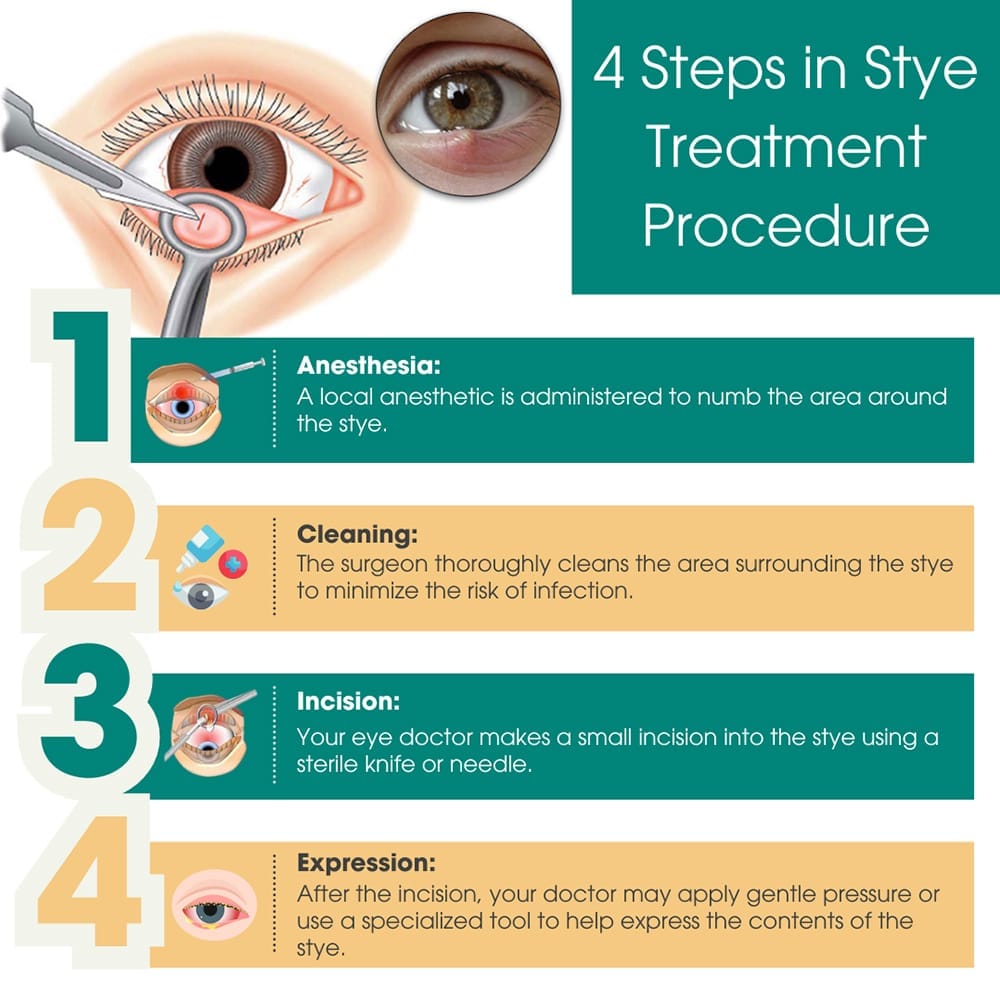Stye surgery, also known as stye drainage or incision and curettage, is a small surgical operation used to treat a stye that hasn’t responded to previous treatments or has become severely irritating. A stye is a red, painful bump on the border of the eyelid that’s typically caused by a bacterial infection of an oil gland in the eyelid. Stye surgery is a quick procedure that you can have done without staying overnight in the hospital.
If you have a stubborn or painful stye that won’t go away with other treatments like warm cloths or antibiotics, your eye doctor might suggest stye removal. Stye surgery typically has excellent results, especially if performed by an experienced eye doctor and sufficient post-operative care is provided.
If you suspect you have a stye or any other kind of eye disorder that’s affecting your vision or your comfort, don’t delay your visit to Eye Physicians in NYC. Their skilled optometrists have years of experience and knowledge to determine whether stye surgery is the right treatment option for you. Other than styes surgery, they also offer procedures like:
Whether or not you’re a suitable candidate for stye surgery depends on multiple factors like the severity of your styes, frequency of your styes and any other underlying conditions you might have. Underlying conditions that may affect your candidacy for stye treatment include:
Styes happen when bad bacteria mess up the oil glands in your eyelids, creating a painful bump. But when it sticks around despite your efforts, surgery becomes the best option.
The surgical process is normally short, lasting between 15 and 30 minutes, and contains various steps, such as:
Once the surgery’s done, you’ll get some instructions on how to take care of yourself while you heal. That might mean putting some ointment on your eye, taking pain meds if you need them and being gentle with your eye for a little while. Most people start feeling better in a few days to a week, and everything should be all healed up in a few weeks.

If you wait too long to get treatment for a stye, several potential complications can arise that affect your general eye health and well-being, such as:
Get them checked out sooner rather than later to avoid these issues. If you decide not to get treatment for a stye, it could cause more problems. Untreated styes could lead to infections or other serious eye issues. Not getting treatment for the stye might result in:
Sometimes, styes can stick around for a while or keep coming back if they’re not treated properly. It’s a good idea to get help if you have a stye. Seeing your Downtown Manhattan eye doctor ensures you feel better faster and lowers the chance of any complications.
Styes coming back after surgery isn’t uncommon. While surgery can remove the stye, it doesn’t always address the underlying reasons why you got it in the first place. If you don’t address the root cause of your styes, they can return for a number of reasons, including:
Addressing these factors is key to preventing styes from coming back after surgery. It’s essential to follow your doctor’s advice post-surgery. They’ll likely recommend good eyelid hygiene practices, prescribe antibiotics if needed, and possibly suggest lifestyle changes to prevent styes from coming back.
The time it takes to recover from stye removal differs for everyone and is influenced by factors such as the size, number and location of the stye needing removal. Once the surgery is over, it’s time to focus on getting better. Your doctor provides you with comprehensive eye care instructions, such as:
Most people recover quickly from stye removal and can return to their normal activities soon after, with clear and comfortable eyes. You can expect to feel relief from the discomfort caused by the stye. The surgery aims to drain any pus or fluid buildup from the stye, which reduces pain and swelling around your eye.
If you’re looking for relief and need stye removal, contact Eye Physicians in NYC now. To reduce your discomfort and restore your eye health, their professional staff provides extensive consultations, customized treatment plans and competent surgical procedures. Don’t allow styes to impair your vision or comfort any longer.
Eye Physicians
110 Lafayette St, Suite 503
New York, NY 10013
(212) 292-4814
Entrust the care of your precious eyesight to highly skilled and experienced eye care professionals. For top-notch ophthalmologists and optometrists in Downtown Manhattan, choose Eye Physicians. Eye Physicians ensures prompt care, precise diagnosis, and personalized treatment plans.
Schedule an Appointment